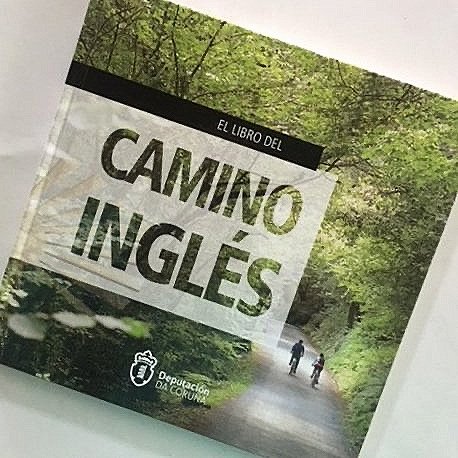June 2023
This summer marks the twentieth anniversary of a rather special journey along the Camino Ingles. Back in the Holy Year 1993 it was still little-known outside Spain, though its two branches, a longer one from Ferrol and a shorter one from La Coruna, were popular local ways to Santiago. Not surprisingly, the 14 members of the Confraternity of Saint James who walked the shorter route that summer attracted significant media attention, since – as the group’s leader, Pat Quaife, later wrote - ‘We were possibly the first group of pilgrims from the British Isles…to walk the route since the early sixteenth century’.
British devotion to St James the Great, expressed in hundreds of church dedications and place-names up and down the country, became a casualty of the separation of the English church from Rome under Henry VIII. The veneration of saints and relics was suppressed and the practice of pilgrimage died out, but the memory of English pilgrims to Santiago lingered on in Galicia. The name ‘Camino Ingles’ came to be colloquially used to refer to the routes leading from the ports where they had once landed in considerable numbers, especially in compostellan Holy Years.
In 1993, re-enacting the historic pilgrim journey from La Coruna was only part of Pat Quaife’s aim of reviving the Camino Ingles. Her own research, and the example of the Camino Frances, persuaded her that this was possible. Enlisting the organisational help of the Confraternity’s half-dozen Galician members was a first step. As the trip took shape, press releases were sent out from London. The Archbishop of Santiago’s own Holy Year Press Officer agreed to lend a hand. As a result of all this, the Confraternity pilgrims appeared on TV Galega, and in Galicia’s leading newspaper, La Voz de Galicia. Braving atrocious weather, the 14 walkers made their way from Coruna’s church of Santiago to the historic halts of Sarandones, Hospital de Bruma (site of a 12th century former pilgrim hospital), and Ordenes, where they were received by the mayor (a fellow-enthusiast, who had already waymarked his municipality’s section of the route). Once past Sigueiro, the Confraternity pilgrims were soon in the outskirts of Santiago, then making their way to the Plaza del Obradoiro under a banner brought along by a Cornish member of the Bredereth Sen Jago. On the following day, the group received Holy Year certificates (the journey wasn’t long enough for them to be able to claim the compostela) and signed the pilgrim register. Pat later wrote up the journey for Confraternity Bulletin 50, and circulated the news to other European associations
Since then, of course, the Camino Ingles has been well and truly ‘revived’, taking its place among the documented and officially recognised routes leading to the City of the Apostle. Thanks to the strong promotion it now receives, it gets its share of international pilgrims, many of them British. Twenty years on from 1993, I think it’s worth celebrating the journey that began its revival, after nearly 500 years of being all but forgotten outside its immediate area.
